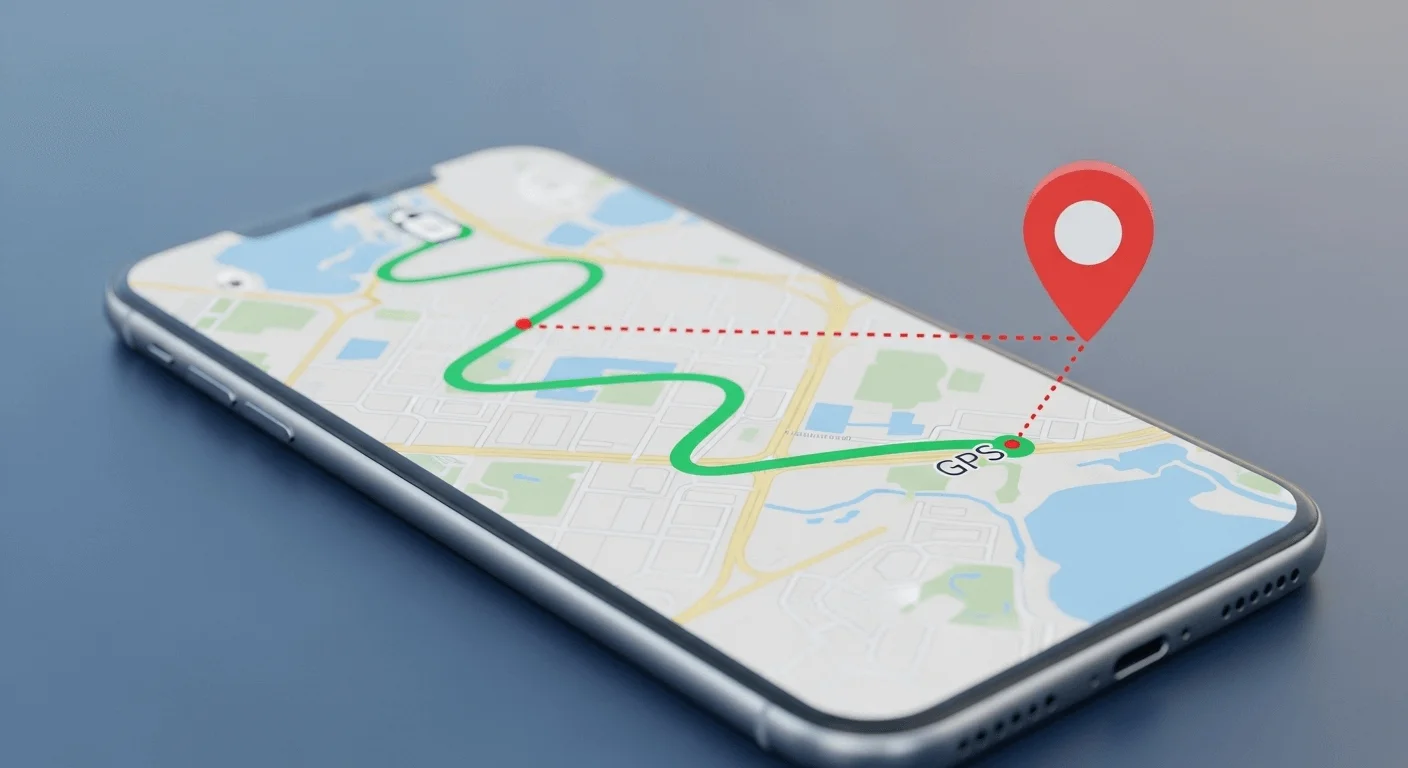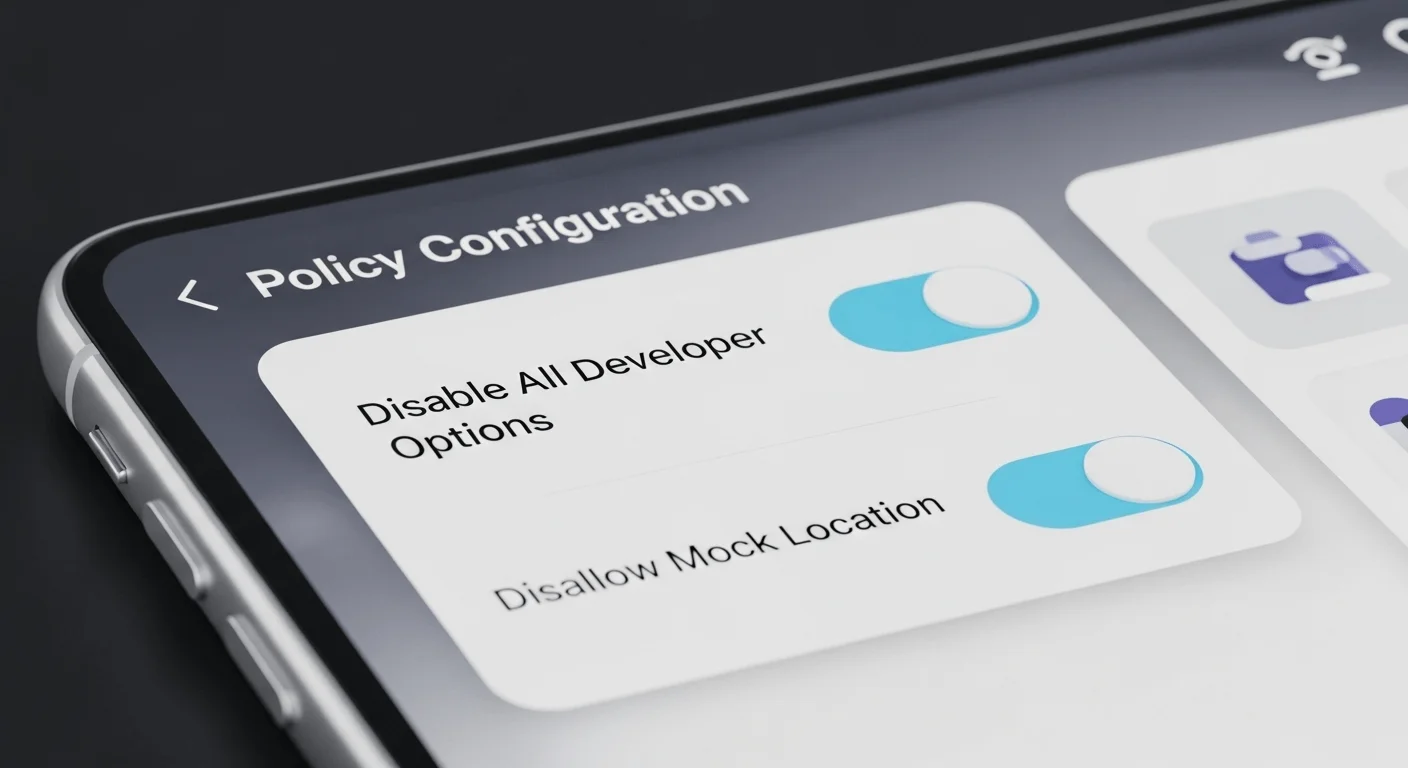What Is Android Mock Location? Beyond the Developer Sandbox
An employee's location data says they're on-site, but you suspect they're still at home. Your timekeeping, geofencing, and compliance systems are all at risk. You might be dealing with Android mock location, a developer feature that can be easily misused.
This guide moves beyond basic definitions. We'll give you a complete understanding of how this feature works, the specific business risks it poses to industries like logistics and healthcare, and the definitive way to gain control using a Mobile Device Management (MDM) solution. We will cover what mock location is and how it's enabled, explore its legitimate uses versus the serious business risks, and detail how to implement proactive MDM policies to disable it and secure your mobile fleet.
Understanding the Core Technology
Android mock location is a developer setting designed to feed false GPS coordinates to the device's operating system. It is not a standard user feature; it must be intentionally enabled through a hidden 'Developer Options' menu. When active, any application that requests location data-from a time-tracking app to a custom line-of-business tool-receives the fake, or 'mocked,' coordinates instead of the device's true physical location. This is different from simple GPS signal loss or inaccuracy; it is a deliberate act of providing false information to the entire system.
- System-Level Override: It operates at the operating system level, meaning it deceives all apps on the device simultaneously.
- Requires User Action: Enabling it is a multi-step process that cannot happen by accident. It requires unlocking a hidden settings menu.
- App-Dependent: The feature itself does nothing until the user installs and designates a third-party 'GPS spoofing' app to provide the false coordinates.
Understanding the technical foundation of Android is crucial for effective management. An MDM's sole focus on Android provides deep expertise in these OS-level features that generic MDMs often treat as a simple checkbox. When your management tool understands the platform inside and out, you can create more effective, granular security policies.

How Users Enable Mock Location: A 3-Step Process
The Path to Bypassing Location Controls
Arming yourself with the knowledge of how employees enable this feature is the first step to securing against it. The process is straightforward for a tech-savvy user and highlights a native Android vulnerability that requires a native Android solution. An MDM must be able to control the Developer Options menu itself, not just react to its consequences.
- Unlock Developer Options: The user navigates to Settings > About Phone and taps on the 'Build Number' seven consecutive times. A message confirms that "You are now a developer," making the hidden 'Developer Options' menu visible in the main settings list.
- Install a Mock Location App: The user downloads any number of free or paid GPS spoofing applications from the Google Play Store. These apps typically present a map-based interface, allowing the user to drop a pin anywhere in the world to set their desired fake location.
- Assign the App: Within the newly visible Developer Options menu, the user scrolls down to the 'Debugging' section and taps 'Select mock location app'. They then choose the GPS spoofing app they just installed. The device is now ready to broadcast a fake location to all services that request it.

The Double-Edged Sword: Legitimate Uses vs. Critical Business Risks
Legitimate Use Cases for Mock Location
While it poses clear risks in a corporate environment, mock location has valid purposes, primarily in development and testing. Application developers rely on it to test location-based features without physically traveling, such as simulating a delivery route for a logistics app or testing geofenced notifications for a retail application. In some enterprise scenarios, it can be used for training simulations, like guiding a field service technician through a virtual job site, or for strategic planning by mapping out new sales territories or delivery zones. Recognizing these legitimate uses is key to creating nuanced MDM policies. A sophisticated MDM can allow this feature for specific devices in a development group while blocking it for the entire field workforce.
| Legitimate Use Case | Description | Corporate Risk Level |
|---|---|---|
| Application Development | Developers simulate different locations to test how an app behaves without needing to travel. | Low (in controlled dev environments) |
| Training & Simulations | Field service or logistics teams can "walk through" a remote job site or route for training purposes. | Medium (requires strict oversight) |
| Strategic Planning | Managers can model new delivery routes or sales territories to analyze efficiency. | Medium (requires strict oversight) |
How Unmanaged Mock Location Impacts Your Bottom Line
For the vast majority of your corporate fleet, the risks of mock location far outweigh the benefits. This is not just a technical problem; it is a business problem with significant financial, operational, and compliance consequences. Industry-specific solutions for Logistics and Healthcare are often built with these exact risks in mind, providing pre-configured policy recommendations to mitigate them from day one.
The primary risks include:
- Time Theft and Payroll Fraud: Employees can 'clock in' from home or any other location by spoofing their GPS coordinates to the job site. This directly impacts payroll accuracy and productivity. A study estimates that time theft costs U.S. employers more than $400 billion per year in lost productivity.
- Route & Geofence Non-Compliance: In logistics and field services, drivers can fake their location to hide unauthorized stops, long breaks, or personal errands while appearing to be on their assigned route. This directly violates compliance standards like the ELD (Electronic Logging Device) mandate for commercial trucking.
- Data Security Breaches: If your security posture uses location-based access controls-for example, allowing access to sensitive corporate data only when a device is physically within the office-mock location can be used to bypass these critical security layers completely.
- Asset Mismanagement: For industries tracking high-value mobile equipment, like portable diagnostic machines in a hospital, location spoofing can render asset tracking systems useless, leading to lost or stolen equipment.
In a LinkedIn post, Adam Wingfield, Founder of Innovative Logistics Group, described a driver who had falsified his ELD location while hauling a live load across state lines. The manipulation was not just a technical glitch or one-off event; it was part of a calculated effort to evade oversight while appearing compliant.

The Definitive Solution: Proactive Control with MDM
Moving from Reactive Detection to Proactive Prevention
While some applications can attempt to detect when a mock location is being provided, this is an unreliable, reactive strategy. Developers can check for flags like `isFromMockProvider()` within their app's code, but sophisticated spoofing apps are constantly evolving to hide their presence. This approach creates a technical cat-and-mouse game and suffers from several key weaknesses:
- It is not scalable: Detection must be built into every single location-aware app you use, including third-party software you do not control.
- It is not foolproof: Advanced spoofing tools can hide the very flags that detection methods look for.
- It is reactive: It only tells you that spoofing has already occurred, not preventing it from happening in the first place.
The only definitive way to manage this risk is to prevent the feature from being enabled. This is where an MDM solution built on the Android Enterprise framework is essential. It allows you to enforce restrictions at the OS level, making them impossible for the user to bypass.
"GPS spoofing...actively misleads systems, creating the illusion of authenticity." - Markus Lutz, GeoConnexion
This highlights why simple detection is flawed; you are trying to validate data that is designed to look real. You must block the source of the counterfeit signal.
Implementing MDM Policy: Two Levels of Control
A robust, Android-focused MDM provides two primary methods for controlling mock location, allowing you to tailor the policy to different user groups and security needs. Within a dedicated MDM dashboard, applying these policies takes just a few clicks, abstracting the complexity of the underlying Android Enterprise APIs.
| Control Method | Description | Best For |
|---|---|---|
| Disable Developer Options Globally | This policy makes the entire 'Developer Options' menu completely inaccessible to the user. If the user cannot access the menu, they cannot enable mock location or any other developer setting. | Maximum security environments, fully managed single-purpose devices (Kiosks), and general frontline workforce devices where no developer access is needed. |
| Specifically Disallow Mock Locations | This granular policy, corresponding to the Android Enterprise configuration DISALLOW_MOCK_LOCATION, keeps the Developer Options menu available but specifically disables and grays out the toggle for mock locations, rendering it unusable. | Environments where IT staff or developers need access to other tools within Developer Options (like USB debugging) but must be prevented from spoofing their location. |

Securing Your Fleet: From Knowledge to Action
Understanding the threat of Android mock location is the first step, but taking action is what protects your business. Relying on app-level detection is an insufficient and reactive strategy that leaves your organization vulnerable to time theft, compliance breaches, and security gaps.
- Key Takeaway: Android mock location is a powerful developer tool, but for corporate-owned devices, it presents significant business risks that must be managed.
- Key Takeaway: Proactive prevention is the only reliable security posture. A Mobile Device Management (MDM) solution is the definitive tool to prevent mock location abuse.
- Key Takeaway: Using Android Enterprise policies managed through an MDM, you can either disable Developer Options entirely for maximum security or specifically block just the mock location setting for more granular control.
Review your corporate device policy today. If you are not explicitly blocking mock locations on your Android fleet, you have a security and productivity gap that needs to be closed. It is time to implement a proactive MDM policy to eliminate this risk.
Nomid MDM provides the specialized, Android-native controls you need to secure your entire fleet. Our deep expertise in Android Enterprise makes it simple to configure and deploy policies that disable mock locations and protect your organization from location spoofing. To see how easily you can enforce these OS-level restrictions across your devices, schedule a demo and take control of your mobile environment.
Share this article
Tags
- #android mock location
- #mock location
- #fake GPS
- #location spoofing android
- #android enterprise location


